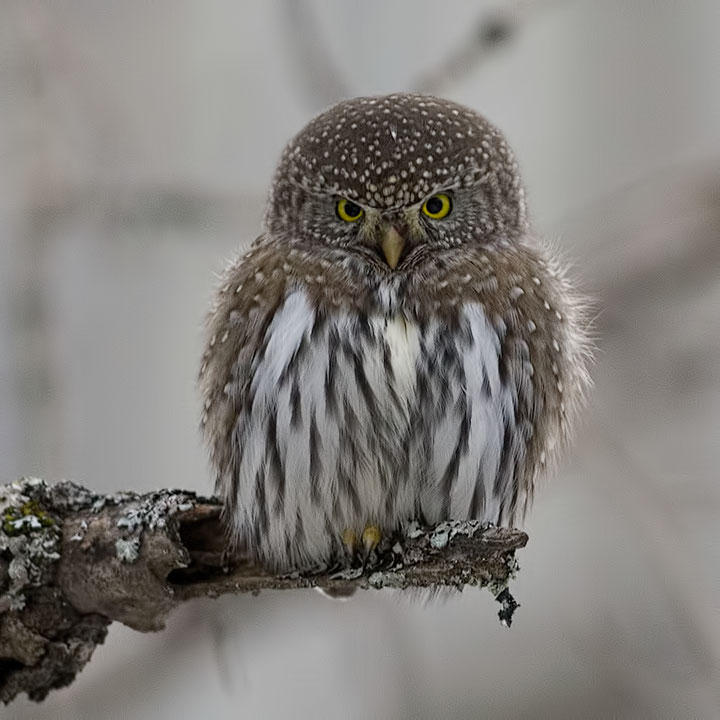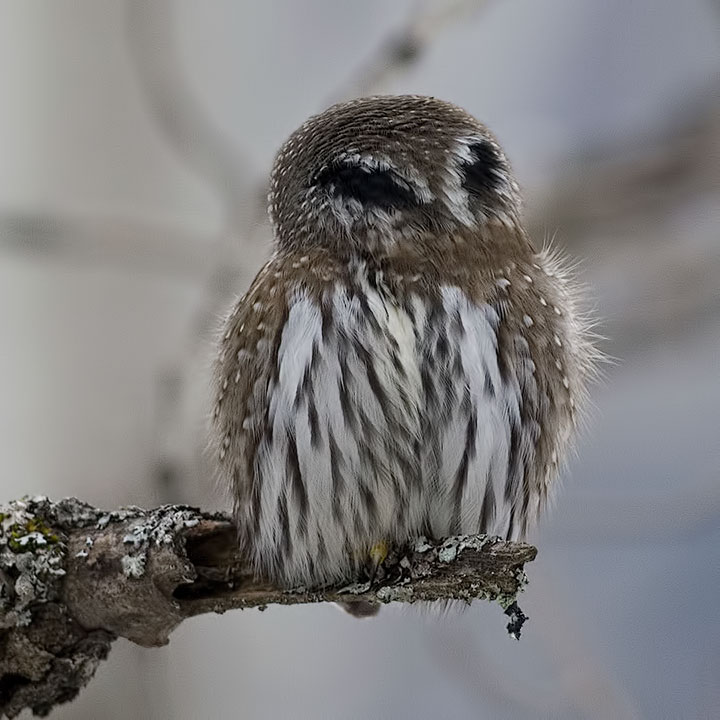It was long gone before I arrived.
Derek Kite spotted the Northern Pygmy Owl during a walk, took many pictures of it, and promptly alerted me. Alas, I did not get to see the bird, but Derek graciously allowed me to use his superb images on this blog.
Appropriately named, the pygmy owl is the smallest of the owls to be seen around the Lake: it is only about 15 to 17 cm long. An owl of the Pacific Cordillera, it is a sit-and-wait predator that (unusual for owls) hunts mainly during the day. While it is happy to hunt other birds and even reptiles and amphibians, it seems to specialize in voles (as do so many other predators).

An owl’s eyes are not spherical (as are a human’s) but shaped somewhat like the pellet of an air gun. This gives them a rather large retina, but means that the eyes cannot easily turn in their sockets. The owl’s solution to this ocular inflexibility is to compensate with an amazingly flexible neck (many extra vertebrae) which enables it to turn its head around almost backwards. Here the Pygmy Owl has done just that, and in doing so, revealed some eye spots on the back of its head. This owl is sufficiently small that it can be the object of predation by other owls, and even jays, crows, ravens, snakes, and weasels. What better way to intimidate your foes than to suggest that you are watching them even when you are not.

Derek Kite’s pictures are used with permission.

I couldn’t have realized what an exquisitely beautiful creature this is. The fine featheriness, the patterns.
How can such richness of composition be purely functional? You photographers render to us living creatures more remarkable than the product of a million mythical imaginings.
Pamella, I too am often astounded at just how well the photography thing sometimes works. Daguerre has a great deal to answer for.